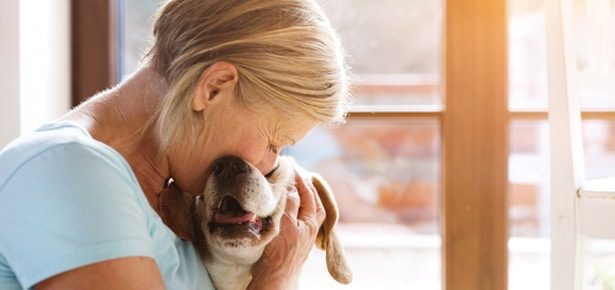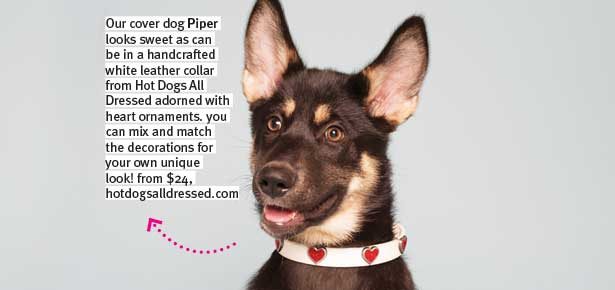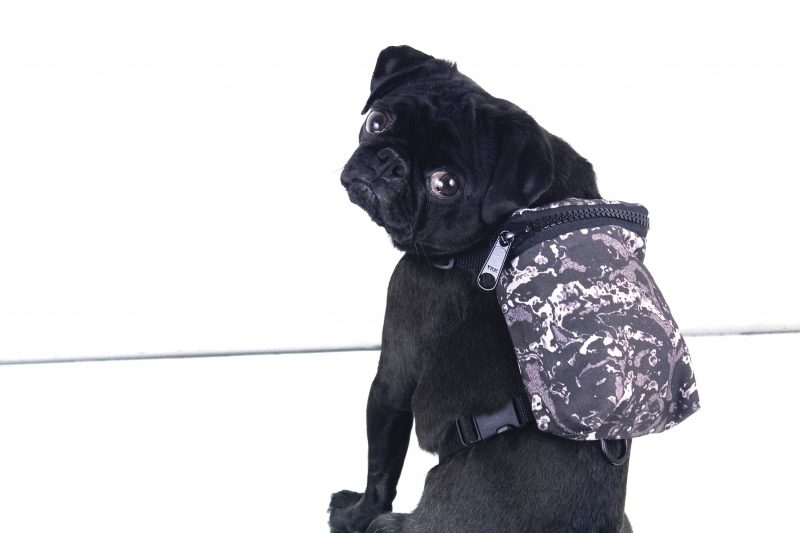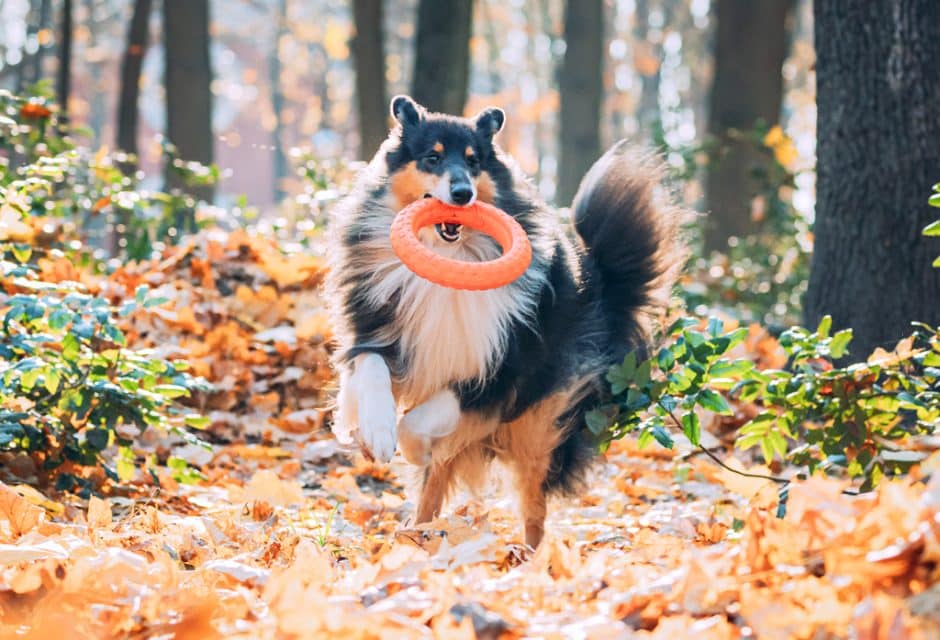

What Your Dog Really Wants
Dogs are problem-solving team players who need more than cookies and affection to prosper. Follow these 8 steps to make sure your dog is happy, secure, and fulfilled.
We love our dogs. To show it, we write magazines and books about them, buy them designer collars and clothes, and feed them diets more nutritious than what we ourselves ate in college. Our dogs go on vacation with us, visit doggie daycares, get massages, go on dates. They get birthday presents, and haircuts more expensive than our own. Some even get their own trust funds. Yes, we definitely love them.
But what do they really want?
Besides steak and bottomless cookie jars and slow cats and bellies full of grass, they probably have a much more doggish list of things that truly make them happy, secure, and fulfilled. But what exactly would those be?
They can’t actually make a list, so we’ll need to do it for them as best we can. It’s a wish list based not upon what makes us happy, but upon what they need as canines living in a human world. Let’s take them one at a time:
Your Dog Wants: Good Health
This one’s a no-brainer; every dog deserves to be kept in top physical condition. You can start by feeding her the best quality food you can, in the right amounts, with special focus on her age, energy levels, and potential allergic reactions. Deciding on the right food can be made easier by the second key factor in maintaining your dog’s health—namely, your veterinarian. In addition to giving vaccinations, your veterinarian will keep tabs on your pet’s overall health, recommend food options, and diagnose potential issues such as allergies, joint problems, disease, and even behavioural problems. Accordingly, be sure to take your dog into the vet at least once a year.
The other key ingredient in maintaining your dog’s good health is exercise. Sedentary dogs gain weight, which in turn affects joint health, and can incite early-onset diabetes. A lack of exercise also creates boredom and pent-up stress, leading to a host of behaviour issues. Avoid this by walking your dog, playing fetch with her, taking her to the dog park—whatever the two of you enjoy doing together.
Your Dog Wants: Guidance
With the minds of two-year-old humans and the physical prowess of Olympic athletes, dogs need direction from us, their elders, to learn focus, control, and etiquette. Without it, they can become insecure holy terrors, without muse or cause. Whether you call it leadership, mentoring, management, or guidance, it’s essential to Fido’s happiness.
A dog who knows the rules will be more at ease than one forced to run the show for lack of human guidance. Truth is, though they aren’t capable of running things in our world, we often put dogs in that position by forgetting that, like kids, they crave boundaries. To that end, be sure to train Fido from day one. Teach rules, manners, and consequences; be consistent, build routine, and praise to the hilt when he minds. The reward will be a sentient, well-behaved, cheerful pet with calm focus, instead of an unreliable and reactive pain in the neck.
Your Dog Wants: The Right Kind of Socialization
Dogs need to interact to feel fulfilled, and to learn basic social mores. But their sociability is not unlimited; in fact, most dogs are somewhat tribal in nature, preferring to mingle with those they know, or with those who pose no discernible threat. It’s why so many reasonably social dogs don’t fare well in big doggie daycares, or at busy dog parks. Dropped into a seemingly chaotic situation filled with strange dogs and people, many dogs can short circuit, stress out, or even act aggressively.
Isolating a dog is just as detrimental. Keeping Molly at home 24/7, without exposure to other persons or pets, can create an antisocial misfit who, when confronted by a visitor to the home or a strange dog on the street, might erupt in fearful fury. This scenario occurs often; we lead busy lives, and sometimes fall into routines that don’t allow for getting the dog out often enough. And when a dog begins to become antisocial, her owner often tends to cloister her away even more, in an attempt to avoid the conflict. This compounds the problem.
Try to get your dog out on a regular basis. Take her for a daily walk, and a weekly trip in the car. Visit the dog park on days that aren’t too chaotic. Trade dogs with a good friend once a week. Don’t force your dog to socialize, but allow her a significant amount of contact with friendly, focused dogs, and with people who understand how to interact calmly and confidently. Always praise and reward for civil interaction. Avoid subjecting your dog to frenetic children, or to unpredictable, chaotic environments. Take into consideration your dog’s personality, too; if she is a gregarious, happy girl capable of mixing it up, then have at it. But if she is a worry wart, consider limiting social time to those few friends she feels comfortable with.
Your Dog Wants: Enrichment
Dogs need to problem solve, investigate and evaluate, and apply their senses, brains, and muscles to some end, to feel that they have purpose. Without these things, they overflow with energy and desire, and eventually burst like a bubble, in the form of misbehaviour. To avoid this, enrich Fido’s life by providing him with stimulating toys, environments, events, and conditions. When he’s left alone, supply him with safe chew toys, and perhaps a treat-stuffed rubber ball. Hide small treats about the home for him to find. Leave the radio on a talk radio station.
To test your dog’s problem solving skills, place an uncooked chicken egg in his dish and watch what happens (limit this to a cleanable area). Leave a scent trail for him to follow by sprinkling a tiny line of allspice or bouillon powder, leading to a hidden treat or toy. Or, simply leave a few pigeon feathers about. Whatever might get your dog
While with your dog, enrich his day by trick training or vocabulary building. Teach him to retrieve specific objects, or play flyball. Attend an agility class. Any experience that inspires him to think, act, and focus will enrich his life, and make for a smarter, better-behaved pet.
Your Dog Wants: Solidarity
Dogs need to feel part of a cohesive, functional team, one with a territory, a mission, a character. Whatever you call it—pack, family, team, or gang—it’s a part of their mindset, and you need to honour it.
As team manager, you should evoke a sense of solidarity, or team spirit. Do so the way a dog would: protect and care for her, participate in group activities with her and other dogs, exude confidence and control, and be a good muse. Dogs who see their owners happily interacting with others will model that behaviour and attitude. If you have multiple dogs, take them all (and other humans, too) out for a group walk of the neighbourhood, to induce that sense of tribal pride. Or, just get down on the floor with them and have a frolicking romp of it.
Your Dog Wants: Earned Praise
If you praise a dog for a behaviour, he will logically repeat the behaviour. But if you randomly give gratis praise, the dog ends up training you instead. For instance, if your dog shoves his head into your lap and you pet him, he’s basically training you to pet him. This role reversal can become problematic, and contribute to increasingly pushy behaviour.
Instead, give your dog what his pragmatic mind prefers: the opportunity to earn praise. Make him sit for a treat instead of just giving it to him. Have him come to you for a pet on the head. This quid pro quo attitude will condition him to respond faster and with more zeal.
Also, avoid consoling your dog during times of fear, as consolation is interpreted by the dog as praise. If he gets scared of thunder and you comfort him, he will interpret this as reward for the behaviour, reinforcing the fearful conduct. That’s how dogs think.
Your Dog Wants: Calmness and Consistency
Your dog doesn’t want you to be an emotional roller coaster. If you are enervated and joyous one day and morose and grumpy the next, you’ll confuse and worry her. She would rather you be a master of calm, as this projects normalcy and safety. So, avoid both ends of the emotional spectrum; no over-the-top, frenetic, schmaltzy outbursts, or gloomy, oppressive, threatening attitudes. Be what your dog needs, a calm, cool inspiration. Also, try to be consistent regarding not only attitude, but consequence; if one day you yell at her for jumping up, but the next praise her for it, you’ll drive her batty. Sticking to the rules and being consistent is what she wants.
By all means, give your dogs gobs of love and attention. But remember that they are problem-solving team players who need more than affection and cookies to prosper. By mentoring them and attending to their doggish wants, you’ll get a happier, better behaved dog in return. And you’ll learn a thing or two in the process.
Join the newsletter and never miss out on dog content again!
"*" indicates required fields
By clicking the arrow, you agree to our web Terms of Use and Privacy & Cookie Policy. Easy unsubscribe links are provided in every email.





